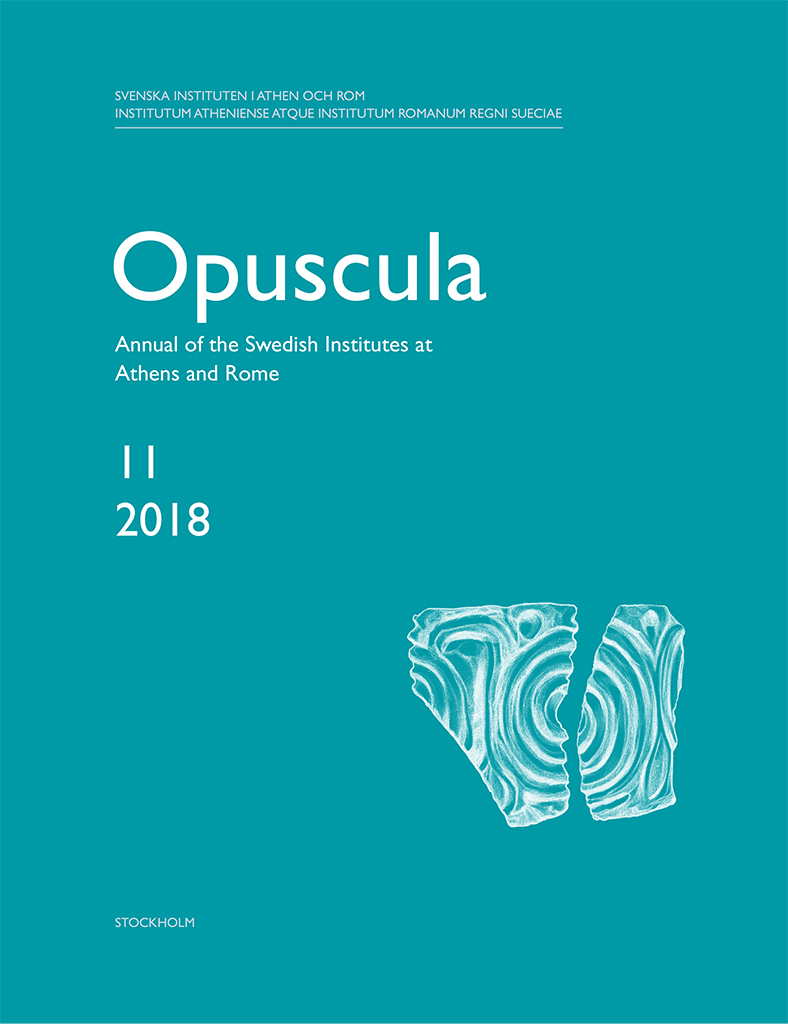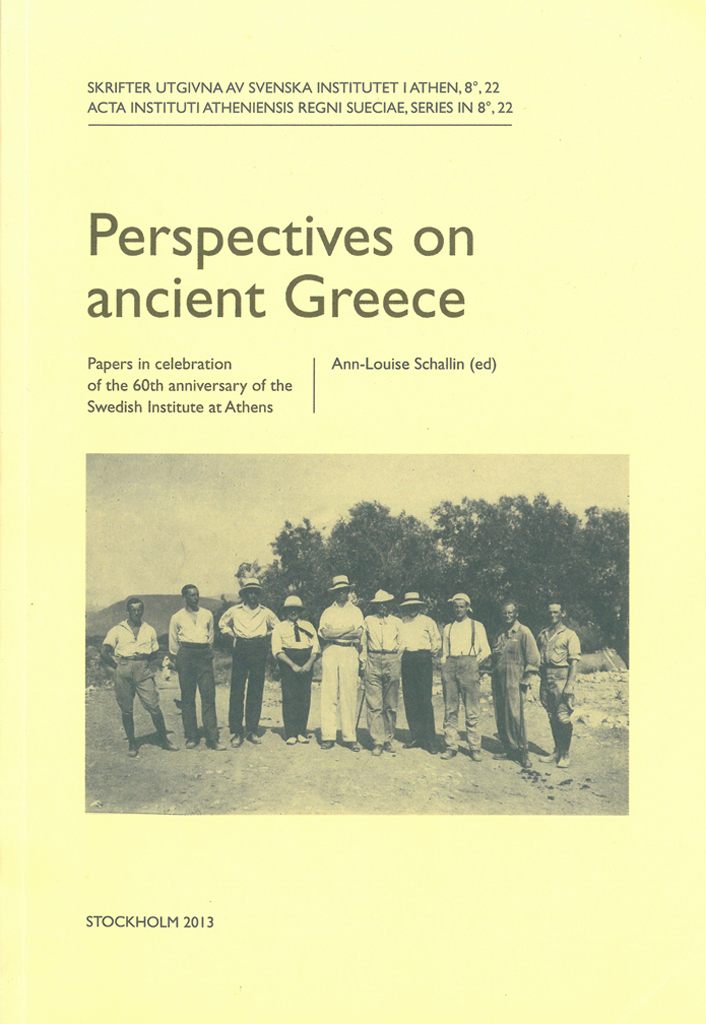Opuscula is published by the Swedish Institutes at Athens and Rome, with the aid of a grant from the Swedish Research Council. Distributed by Eddy.se AB. View journal at ERIH PLUS. All content available with open access. The hand gesture and symbols of Sabazios By Susanne Berndt (Stockholm University). Abstract The material evidence left from the cult of Sabazios is meagre, apart from sculpted bronze hands dating to the Roman Empire. The hand is held in a certain pose, the so-called benedictio Latina gesture, and the hand was often covered with depictions of various objects and symbols. The bronze hands were probably attached to staffs and carried around in processions. This practice most likely spread via the channels of the Roman army during the Early Imperial period, but the gesture existed much earlier. The gesture is found on Attic black- and red-figured pottery, and is frequently associated with Hermes in his role as instructor and Psychopompos. From the beginning of the Hellenistic period the gesture was mainly used as an indication of speech, and for knowledge transmitted through speech. There are several examples of how the gesture was used to indicate the knowledge revealed through the initiations of mystery cults….
Opuscula is published by the Swedish Institutes at Athens and Rome, with the aid of a grant from the Swedish Research Council. Distributed by Eddy.se AB. View journal at ERIH PLUS. All content available with open access. Cutting the Gordian knot. The iconography of Megaron 2 at Gordion By Susanne Berndt Abstract This article examines the incised drawings of Early Phrygian Gordion, and in particular those of Megaron 2. Aspects of their iconographic and archaeological contexts are taken in to consideration, as well as literary sources and especially the story of the Gordian knot. The focus of the study is a series of incised labyrinths, which have hitherto not been recognized as such, but which are of particular interest for the analysis of this building. The myth of Theseus and the Minotaur in the labyrinth helps to throw light on both the images of Megaron 2 but also on the story of the Gordion knot, and how these are interlinked with each other. It is suggested that Ariadne’s ball of thread and the Gordian knot are two different expressions of a similar concept; both represent sovereignty provided by a Goddess. Megaron 2 seems to have been a building that was…
Published by the Swedish Institute at Athens. Distributed by Eddy.se AB. Perspectives on ancient Greece. Papers in celebration of the 60th anniversary of the Swedish Institute at Athens Edited by Ann-Louise Schallin Abstract This volume presents current research related to Greek prehistory and Classical Archaeology and thus serves as a crosssection of the research strategies, which the Swedish Institute at Athens promotes. The topics relate to research, which span from the Neolithic to the Hellenistic times. The reason for putting this publication together is twofold: one aim is to publish the papers, which were put forward by a select number of Swedish scholars who were invited to give lectures at the Swedish Institute at Athens during the celebrations commemorating the Institute’s 60th anniversary on 10 May 2008. The second aim is to honour professor emeritus Robin Hägg, who was the director at the Swedish Institute at Athens from 1976 to 1994. This book thus consists of articles based on the lectures, which were held at the Swedish Institute celebrations on May 10 2008 and also of a number of articles by scholars who wished to celebrate Robin Hägg and who thus joined the venture. Contents Acknowledgements Ann-Louise Schallin | Introduction…
Opuscula is published by the Swedish Institutes at Athens and Rome, with the aid of a grant from the Swedish Research Council. Distributed by Eddy.se AB. View journal at ERIH PLUS. All content available with open access. Book reviews Susanne Berndt-Ersöz | M. Xagorari-Gleissner, Meter Theon: Die Göttermutter bei den Griechen (Peleus Studien zur Archäologie und Geschichte Griechenlands und Zypern, 40), Ruhpolding: Verlag Franz Philipp Rutzen 2008. 161 pp., 14 pls. ISBN: 3-938646-26-7. https://doi.org/10.30549/opathrom-04-08 Hans Lejdegård | Ralph W. Mathisen & Danuta Shanzer (eds.), Romans, Barbarians, and the Transformation of the Roman World. Cultural Interaction and the Creation of Identity in Late Antiquity, Farnham: Ashgate 2011. 378 pp., 27 ills. ISBN: 978-0-7546-6814-5. https://doi.org/10.30549/opathrom-04-09 Karin W. Tikkanen | S. J. Harrison (ed.), Living Classics. Greece and Rome in Contemporary Poetry in English (Classical Presences), Oxford: Oxford University Press 2009. 346 pp., 1 fig. ISBN 978-0-19-923373-1. https://doi.org/10.30549/opathrom-04-10 Luciano Santella | B. Santillo Frizell, Lana, carne, latte. Paesaggi pastorali tra mito e realtà, Mauro Pagliai Editore, Firenze 2010, ISBN 978-88-564-0095-3. https://doi.org/10.30549/opathrom-04-11 Bibliographical information ‘Book reviews’, Opuscula. Annual of the Swedish Institutes at Athens and Rome (OpAthRom) 4, 159–168. Stockholm 2011. ISSN: 2000-0898 ISBN: 978-91-977798-3-8. Softcover, 168 pages.




